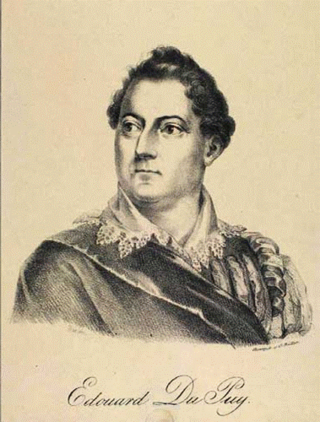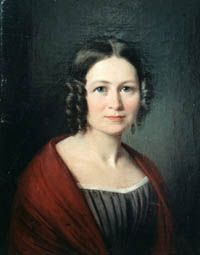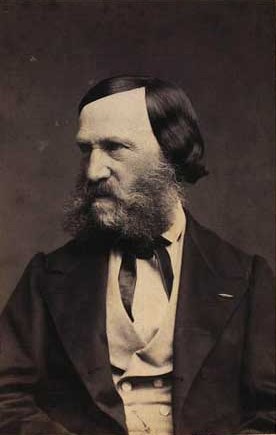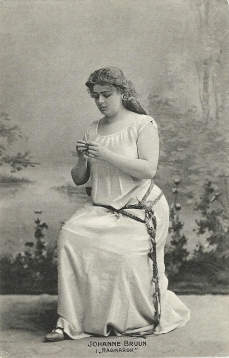
Marienborg, a mid 18th-century country house perched on a small hilltop on the northern shore of Bagsværd Lake, Lyngby-Taarbæk Municipality, 15 kilometres (9.3 mi) north of downtown Copenhagen, has served as the official residence of Denmark's prime minister since 1962. It is frequently used for governmental conferences, summits and other official purposes, including the prime minister's new year speech. Unlike the residences of many other heads of government and state, Marienborg does not serve as the government headquarters or contain the office of the prime minister. The Prime Minister's Office is instead located in Christiansborg on Slotsholmen in downtown Copenhagen. Marienborg was listed on the Danish registry of protected buildings and places in 1964.

Assistens Cemetery in Copenhagen, Denmark, is the burial site of many Danish notables as well as an important greenspace in the Nørrebro district. Inaugurated in 1760, it was originally a burial site for the poor laid out to relieve the crowded graveyards inside the walled city, but during the Golden Age in the first half of the 19th century it became fashionable and many leading figures of the epoch, such as Hans Christian Andersen, Søren Kierkegaard, Christoffer Wilhelm Eckersberg, and Christen Købke are all buried here.

Johan Peter Emilius Hartmann was, together with his son-in-law Niels W. Gade, the leading Danish composer of the 19th century, a period known as the Danish Golden Age. According to Alfred Einstein, he was "the real founder of the Romantic movement in Denmark and even in all Scandinavia". J.P.E. Hartmann was the third generation of composers in the Danish musical Hartmann family.

Frederiksberg is a part of the Capital Region of Denmark. It is formally an independent municipality, Frederiksberg Municipality, separate from Copenhagen Municipality, but both are a part of the City of Copenhagen. It occupies an area of less than 9 km2 and had a population of 103,192 in 2015.

Friedrich Ludwig Æmilius Kunzen was a German composer and conductor who lived and worked for much of his life in Denmark.

Jean Baptiste Édouard Louis Camille Du Puy was a Swiss-born singer, composer, director, and violinist. He lived and worked in Copenhagen and Stockholm from 1793 until his death in 1822.

Amalia Emma Sophie Hartmann née Zinn was a Danish composer who composed under the pseudonym Frederik H. Palmer. She was married to the composer Johan Peter Emilius Hartmann (1805–1900). They lived on the second floor in the Zinn House at Kvæsthusgade 3 in Copenhagen.

Frederik Rung was a Danish conductor and composer.
Paul Sophus Christian Henrik Rung-Keller or P. S. Rung-Keller was a Danish organist and composer.
Events from the year 1850 in Denmark.
Events from the year 1871 in Denmark.

Siegfried Saloman was a Danish violinist and composer. A contemporary of Franz Liszt, he was a pupil of Johannes Frederik Fröhlich, Holger Simon Paulli, Frederik Thorkildsen Wexschall and Johan Peter Emilius Hartmann, from whom he received violin-playing lessons. He toured extensively throughout Europe with the Swedish opera singer Henriette Nissen, to whom he was married in 1850.
Kongelige Kammersangere or The Royal Chamber Singer is a prestigious title given to Danish Opera singers by the monarch. Only about 50 people have received the award since it was started in 1700. The first non-native Danish person who was appointed as a royal chamber singer was the Italian Giuseppe Siboni, who in 1819 received Danish citizenship and became director of the Royal Theatre.
Helge Nissen was a Danish operatic bass-baritone, conductor, voice teacher, and film actor who was associated with the Royal Danish Theatre from 1897 until his death in 1926. He notably created roles in the world premieres of two operas by composer Carl Nielsen: Abner in Saul og David (1902) and Henrik in Maskarade (1906). His voice is preserved on a total of 70 recordings made with the Pathé, HMV and Deutsche Grammophon record companies from 1908 to 1914.

Josephine Amalie Zinck née Lund (1829–1919) was a Danish mezzo-soprano singer who performed in concerts at Copenhagen's Musikforeningen from the age of 18 and in operas at the Royal Danish Theatre from 1858.

Vilhelmine Leocadie Theresia Gerlach was a Danish-Swedish mezzo-soprano opera singer who sang at the Royal Danish Theatre from 1845 to 1866. Considered to have been the country's most successful female singer of her day, she retired from the Royal Theatre while still young but continued to perform and give singing lessons at the Casino Theatre.

Sophie Helene Henriette Keller née Rung (1850–1929) was a Danish operatic soprano, musician and singing teacher, who performed at the Royal Danish Theatre in Copenhagen from 1869. She founded both a conservatory for women and a women's concert association.

Johanne Marie Emilie Brun née Prieme (1874–1954) was a Danish operatic soprano. She made her début at the Royal Danish Theatre in 1896 as the Queen of the Night in The Magic Flute. In 1916, after being honoured with the title of Royal Chamber Singer, she sang at opera houses in Germany, becoming a favourite of the Nuremberg opera and later performing in Aachen and Danzig. In 1924 she returned to Denmark where she had to cope with financial difficulties.

Kronprinsessegade 22–24 are two Neoclassical apartment buildings overlooking Rosenborg Castle Gardens in central Copenhagen, Denmark. They were both constructed by master mason A. C. Wilcken (ca.1760-1816) to designs by Andreas Hallander in 1807–1808. They were listed on the Danish registry of protected buildings and places in 1918 and 1945. Notable former residents include the theologian and politician Henrik Nicolai Clausen (1793-1877), judge Frederik Lütken (1808-1879) and physician Varl Lange. The latter operated a medical clinic at No. 22 from 1878 until his death in 1900.















